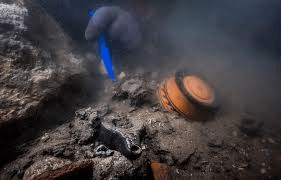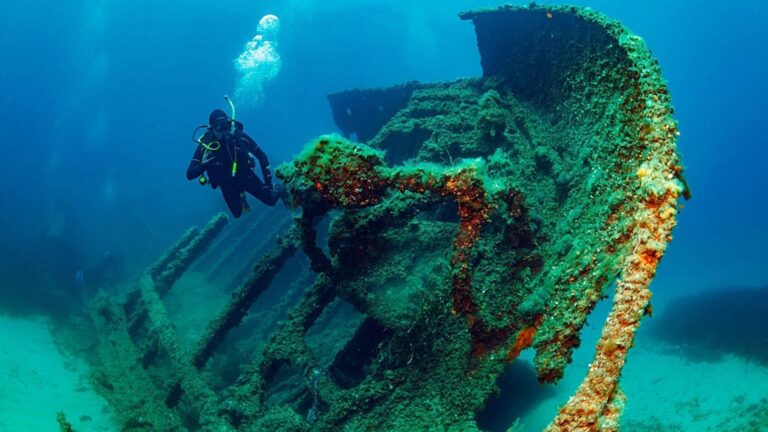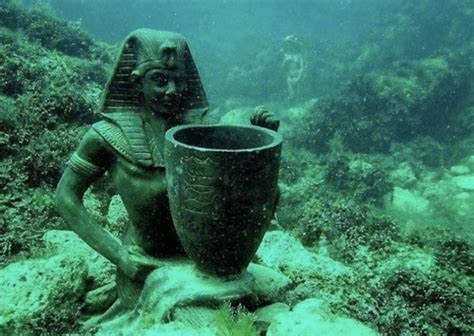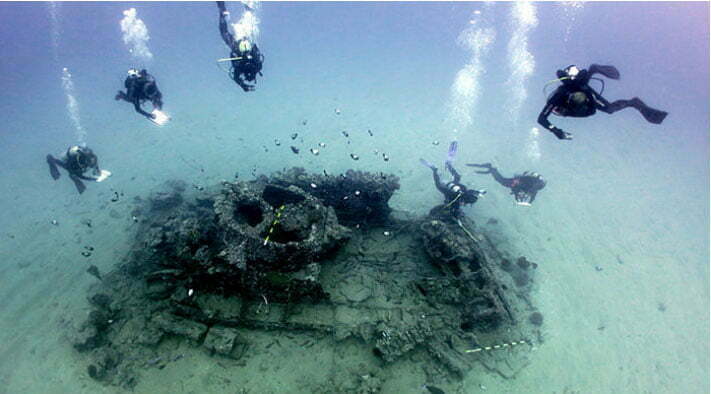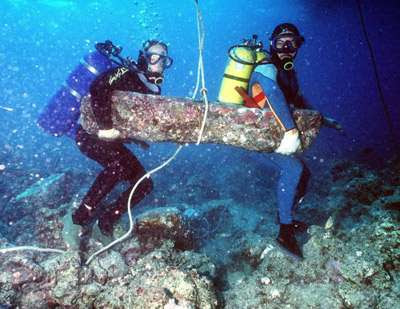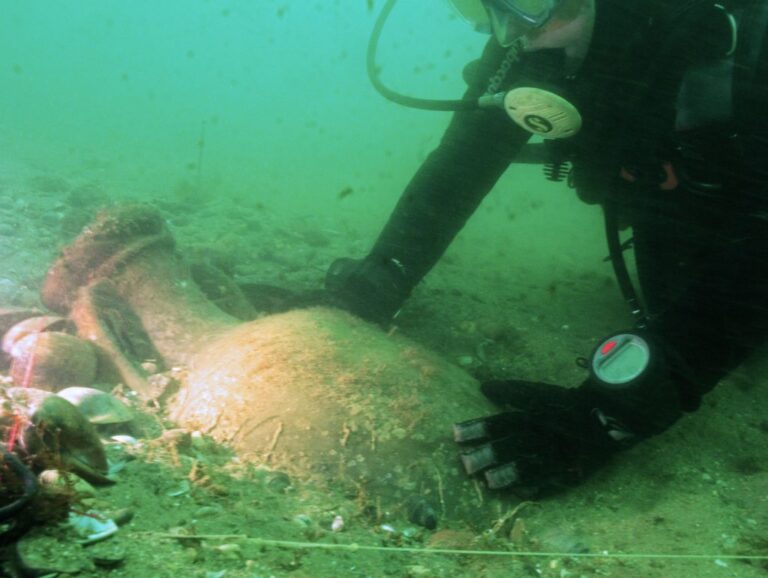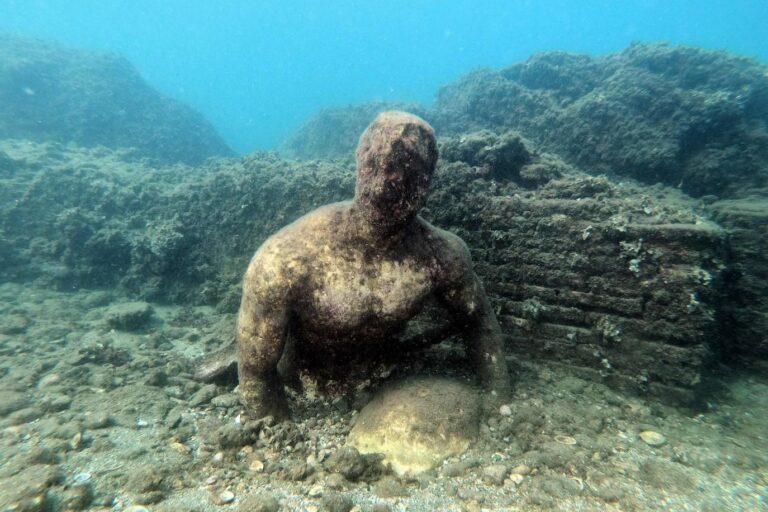Extraordinary Underwater Discoveries: Past Beneath the Waves
In this blog post, we will delve into the captivating world of extraordinary underwater discoveries and explore the hidden past that lies beneath the waves. These discoveries not only fascinate us but also offer valuable insights into our history. As we embark on this underwater journey, we will discover how these findings act as a portal, granting us a glimpse into the mysteries that have remained hidden for centuries.
Table of Contents
The Lost City of Atlantis
The legendary city of Atlantis has captivated imaginations for centuries. According to ancient Greek philosopher Plato, Atlantis was a powerful and advanced civilization that once existed beyond the Pillars of Hercules, but was ultimately submerged beneath the sea. While the existence of Atlantis remains a topic of debate and speculation, recent underwater explorations have shed light on possible locations and findings that could be linked to this mythological city.
Several underwater expeditions have been conducted in search of Atlantis, with researchers exploring areas such as the Mediterranean Sea and the Atlantic Ocean. While concrete evidence of the city’s existence has yet to be uncovered, notable discoveries have been made. These include ancient ruins and structures found off the coast of the Greek island of Santorini, which some believe could be remnants of Atlantis.
The impact of these discoveries extends beyond the realm of Atlantis itself. They provide valuable insights into the ancient civilizations that thrived thousands of years ago. By piecing together the puzzle of Atlantis, researchers are able to expand our understanding of history, culture, and the achievements of past societies. These findings also fuel the imagination and fascination with lost cities, sparking a sense of wonder and curiosity about what other hidden treasures lie beneath the waves.
In conclusion, the lost city of Atlantis continues to intrigue and fascinate people around the world. While the true nature and location of Atlantis may remain a mystery, underwater explorations and related findings help to enhance our knowledge of ancient civilizations. These discoveries not only contribute to our understanding of the past, but they also inspire further exploration and preservation efforts in the quest to uncover the secrets hidden beneath the waves.
Shipwrecks and Sunken Treasures
Shipwrecks and sunken treasures hold a captivating allure for underwater explorers and archaeologists alike. The mystery and historical significance surrounding these underwater relics make them an irresistible focus of exploration.
One of the most famous shipwrecks of all time is the RMS Titanic, which sank in 1912. The discovery and subsequent exploration of the Titanic in 1985 allowed researchers to gain a deeper understanding of the tragic event and the technological advancements of that era. The artifacts recovered from the wreckage serve as tangible reminders of the lives lost and provide valuable historical context.
Another notable shipwreck is the Spanish galleon Nuestra Señora de Atocha, which sank off the coast of Florida in 1622. This ship was laden with treasures from the New World, including gold, silver, and precious gems. The discovery and excavation of the Atocha in the 1980s revealed a wealth of artifacts, providing insights into the Spanish colonial era and the trade routes of the time.
These shipwreck discoveries play a crucial role in historical preservation and cultural heritage. By studying the artifacts, researchers can piece together the daily lives, trade networks, and maritime history of past civilizations. The significance of these findings extends beyond their monetary value, as they offer a window into the past and help us understand the interconnectedness of different cultures throughout history.
From warships to merchant vessels, each shipwreck has its own unique story to tell. As underwater technology continues to advance, more treasures await discovery beneath the waves. It is vital that these sites are explored responsibly, with a focus on preservation and documentation, to ensure that future generations can continue to learn from these extraordinary underwater finds.
Underwater Archaeological Sites
Underwater archaeological sites play a crucial role in uncovering and understanding human history. These sites hold a wealth of knowledge and provide valuable insights into ancient cultures and civilizations that were submerged beneath the waves for centuries. Notable sites like Baiae in Italy and Pavlopetri in Greece have been instrumental in expanding our understanding of the past.
Baiae is a fascinating underwater archaeological site located near Naples, Italy. Once a luxurious resort for the Roman elite, it now lies submerged in the Bay of Naples. Excavations in Baiae have revealed astonishing remnants of ancient Roman villas, temples, and thermal baths. These findings offer a unique glimpse into the opulent lifestyles and architectural prowess of the Roman Empire.
Pavlopetri, on the other hand, is a remarkable underwater city located off the coast of Greece. Dating back to the Bronze Age, this ancient submerged city is believed to be one of the oldest submerged settlements in the world. The well-preserved remains of buildings, streets, and tombs found in Pavlopetri provide valuable insights into ancient Greek civilization, including their urban planning, social structure, and trade networks.
These underwater archaeological sites are not only significant for their historical value but also for their contribution to our understanding of ancient culture and civilization. By exploring and studying these submerged remnants, archaeologists and historians can piece together the puzzle of the past, filling gaps in our knowledge and shedding light on diverse aspects of human history.
The exploration of underwater archaeological sites involves unique challenges, such as the need for specialized equipment, limited visibility, and the fragility of underwater artifacts. However, the efforts to preserve and study these sites are crucial in preserving our cultural heritage and ensuring that future generations can continue to learn from and appreciate these invaluable remnants of the past.
In conclusion, underwater archaeological sites like Baiae and Pavlopetri offer unparalleled insights into ancient culture and civilization. Through their exploration and preservation, we can uncover hidden treasures beneath the waves and gain a deeper understanding of our shared human history. It is essential to continue supporting and investing in these endeavors to unearth more untold stories and preserve our collective heritage for generations to come.
Sunken Cities and Civilizations
The concept of sunken cities and civilizations holds a great significance in the annals of history. These submerged metropolises offer a glimpse into the past, revealing the grandeur and mysteries of ancient civilizations lost beneath the waves. Notable underwater discoveries, such as the Egyptian city of Heracleion and the Mayan cities of Tulum and Dzibilchaltun, have captivated the imagination of historians and archaeologists alike.
The discovery of the Egyptian city of Heracleion, also known as Thonis, has uncovered a wealth of knowledge about the ancient world. This once thriving port city was believed to be a myth until its remains were found submerged in the waters of the Mediterranean Sea. Through the exploration of Heracleion, researchers have learned about the trade routes and cultural exchange that flourished in the region during the time of the pharaohs. The artifacts discovered, including monumental statues, religious relics, and everyday objects, offer valuable insights into the rise and fall of the ancient Egyptian civilization.
Similarly, the sunken Mayan cities of Tulum and Dzibilchaltun have provided invaluable information about the Maya civilization. These archaeological sites, submerged off the coast of Mexico, have revealed the intricate architectural designs, ceremonial structures, and advanced urban planning of the ancient Maya. Through the exploration of these underwater sites, researchers have gained a deeper understanding of the complex social, political, and religious systems that governed the ancient Maya cities.
These discoveries not only illuminate the splendor of the past but also shed light on the decline and eventual disappearance of these once-thriving civilizations. The submergence of these cities hints at natural disasters, such as tsunamis or rising sea levels, as well as the societal shifts and geopolitical changes that led to their abandonment. By studying these sunken cities and civilizations, scholars can piece together the puzzle of history and gain a deeper appreciation for the rise and fall of ancient cultures.
In conclusion, the exploration of sunken cities and civilizations opens up a treasure trove of historical knowledge. The discoveries of the Egyptian city of Heracleion and the Mayan cities of Tulum and Dzibilchaltun provide valuable insights into the past, offering a glimpse into the cultural, social, and political aspects of these ancient civilizations. By unraveling the secrets of these underwater sites, we can better understand the complexities of human history and ensure the preservation of our rich cultural heritage for generations to come.
Underwater Cultural Preservation
Preserving underwater cultural heritage poses several challenges that require careful consideration and planning. The fragile nature of submerged artifacts, combined with the corrosive effects of saltwater and the constant threat of looting and vandalism, requires a comprehensive approach to conservation and protection.
Responsible and sustainable exploration and documentation are paramount in safeguarding these valuable historical treasures. This involves promoting ethical practices among divers and archaeologists, as well as encouraging public awareness and support for underwater cultural preservation projects. By educating the public about the importance of these sites, we can foster a sense of ownership and stewardship that can help deter looting and ensure the long-term preservation of underwater heritage.
Various preservation techniques have been developed to protect and showcase underwater cultural artifacts. One such technique is the establishment of underwater museums, which provide a controlled environment for showcasing significant finds while still allowing visitors to experience the underwater setting. These museums serve as a means of promoting education and creating awareness about the significance of underwater cultural heritage.
Another preservation method gaining popularity is the use of digital reconstructions. By creating accurate and detailed 3D models of submerged archaeological sites, researchers can virtually preserve and showcase these sites to the public. This not only helps in conservation efforts but also allows people from around the world to explore and appreciate these underwater wonders without physically disturbing them. Digital reconstructions also play a crucial role in data preservation and future research, ensuring that even if the physical artifacts deteriorate, their information and significance are not lost.
In conclusion, underwater cultural preservation is vital in safeguarding the rich heritage hidden beneath the waves. By acknowledging the challenges faced in preserving these valuable artifacts, emphasizing responsible and sustainable exploration, and utilizing various preservation techniques such as underwater museums and digital reconstructions, we can ensure that future generations can continue to learn from and appreciate the extraordinary underwater discoveries of our past. It is through these efforts that we can foster a deeper understanding and appreciation for our shared human history.
Conclusion
In conclusion, extraordinary underwater discoveries play a vital role in expanding our knowledge of the past beneath the waves. These findings provide us with a unique window into the hidden history that lies submerged beneath the world’s oceans. The exploration of sunken cities, shipwrecks, and archaeological sites allows us to piece together the stories of ancient civilizations and understand their rise and fall.
From the legendary Lost City of Atlantis to the remains of sunken Mayan cities like Tulum and Dzibilchaltun, these discoveries have significantly impacted our understanding of ancient cultures and civilizations. They have shown us the remarkable skills and achievements of our ancestors and shed light on their daily lives, customs, and beliefs.
Shipwrecks and sunken treasures have always held a special allure for underwater explorers and archaeologists. The discoveries of famous wrecks such as the RMS Titanic and the Spanish galleon Nuestra Señora de Atocha have not only provided invaluable insight into historical events but have also contributed to the preservation and appreciation of our cultural heritage. These findings remind us of the human stories behind these tragic events and the need for responsible exploration and documentation.
Moreover, underwater archaeological sites like Baiae in Italy and Pavlopetri in Greece have been of great significance in revealing the secrets of ancient civilizations. By exploring these submerged sites, researchers have unearthed precious artifacts and gained a deeper understanding of the past. These discoveries have shown us the complexity and ingenuity of these ancient societies, while also raising questions about their ultimate fate.
However, the preservation of underwater cultural heritage poses significant challenges. The underwater environment is harsh and constantly changing, making it difficult to protect these fragile artifacts. Responsible and sustainable exploration, coupled with innovative preservation techniques such as underwater museums and digital reconstructions, are crucial to ensuring the long-term preservation of these valuable historical remains.
In conclusion, extraordinary underwater discoveries have revolutionized our knowledge of the past, providing a fascinating glimpse into ancient civilizations and their rich histories. These findings contribute significantly to our understanding of human culture and heritage, reminding us of the interconnectedness of our shared history. As we continue to explore and document these hidden wonders beneath the waves, it is essential to encourage further exploration and preservation efforts in order to uncover even more remarkable treasures from the depths of the world’s oceans.

